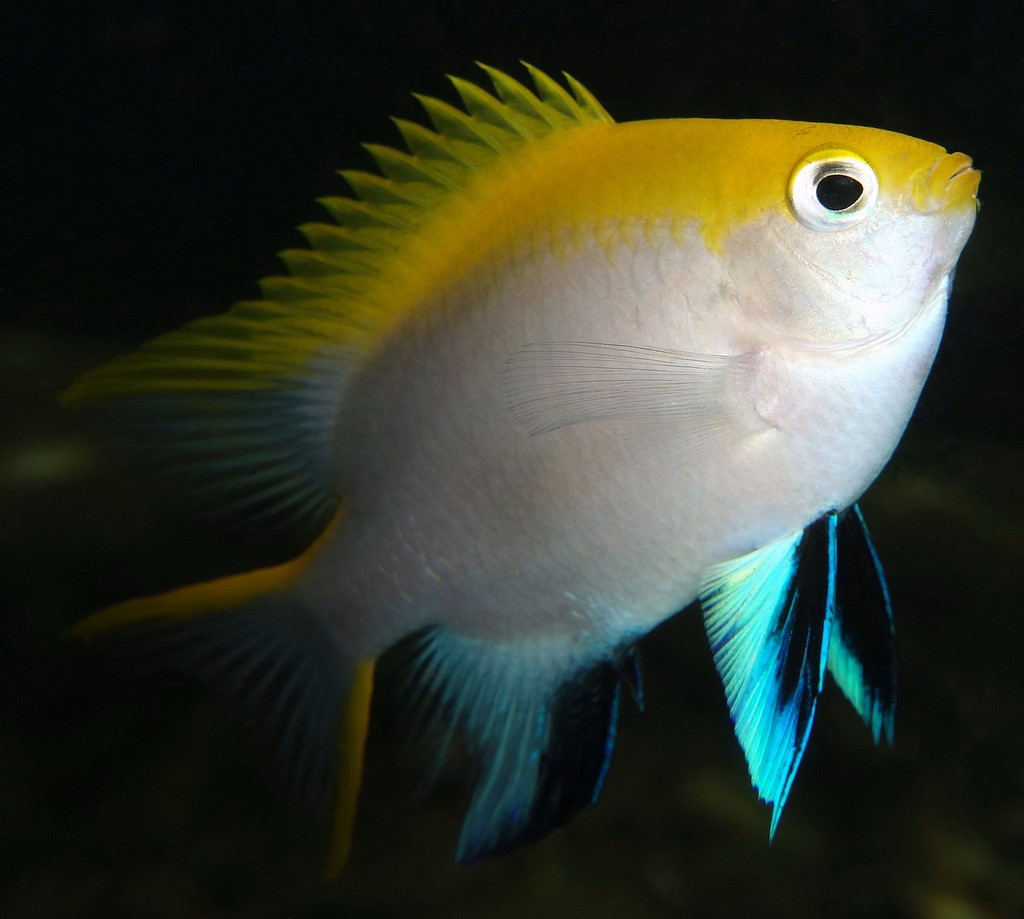NEOGLYPHIDODON MELAS - (CUVIER, 1830)
Picture courtesy of: Jack Berthomier (Flicker)
Demoiselle noire, Black damsel, Black damsel-fish, Blue and gold damsel-fish, Bowtie damselfish, Royal damsel, Royal damselfish, Zoeloe-nooientjie, Blaugoldener demoiselle-fisch, Schwarzer riffbarsch, Kuro-suzumedai, クロスズメダイ, 黑副雀鯛, 黑新箭雀鲷,
Synonymes
Abudefduf melanopus (Bleeker, 1856)
Abudefduf melas (Cuvier, 1830)
Abudefduf rhomaleus (Snyder, 1911)
Abudefduf xanthonotus (Bleeker, 1859)
Glyphisodon ater (Cuvier, 1830)
Glyphisodon melanopus (Bleeker, 1856)
Glyphisodon melas (Cuvier, 1830)
Glyphisodon violaceus (Brevoort, 1856)
Glyphisodon xanthonotus (Bleeker, 1859)
Paraglyphidodon melanopus (Bleeker, 1856)
Paraglyphidodon melas (Cuvier, 1830)
---------------------------
Description
Dorsal spines (total): 13; Dorsal soft rays (total): 14-15; Anal spines: 2; Anal soft rays: 13-15; Pectoral fin rays: 18-19; Lateral line scales: 16-17; Gill rakers: 19-22; Body depth: 1.7-2.0 in SL. Margins of preopercle and suborbital smooth; Suborbital scaled; Teeth biserial. Large adults grows rather large. Max. length: 18.0 cm TL. Depth range: 1 - 12 m.
Color
Adult stage is uniformly black. Transformation from colorful juvenile to uniformly black adult stage occurs at a size of 50 to 60 mm.
Etymology
Neoglyphidodon: from Greek, neos = new + from Greek, glyphis = carved + from Greek, odous = teeth.
melas: from Greek, melas = black. Referring to its blackish-brown body and “even darker” (translation) fins.
Original description: Glyphisodon melas Cuvier, 1830 - Type locality: Java, Indonesia.
Distribution
Red Sea; Indo-West Pacific: East Africa (Mozambique, Tanzania, Kenya), Socotra (Yemen), Seychelles, Madagascar and western Mascarenes (La Réunion, Mauritius) east to Philippines, New Ireland (Papua New Guinea) and Vanuatu, north to Amami Islands (southern Japan), south to northern Australia and New Caledonia.
Biology
Adults are found in coral-rich areas of lagoon and seaward reefs and usually associated with soft corals on which it feeds. Occur singly or in pair. Juveniles are encountered in around staghorn Acropora corals. Adults often near Tridacna clams and may feed on their feces. Oviparous, distinct pairing during breeding. Eggs are demersal and adhere to the substrate. Males guard and aerate the eggs.
Similar species
Neoglyphidodon nigroris (Cuvier, 1830) - Reported from New Caledonia - Link to the species (here). Adults are variable in color from mostly dark brown, to greyish-brown with bright yellow on the rear of the body, a paler face and dusky bars below the eye and behind the preopercle.
Neoglyphidodon polyacanthus (Ogilby, 1889) - Reported from New Caledonia - Link to the species (here). Adults brown with darker scale margins.
Last update: 24, February 2023
